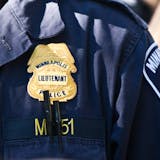Employer health plans could see an enrollment surge as part of the state's push starting this summer to check Medicaid eligibility for some 1.5 million people in Minnesota.
Last month, Minnesota pushed back the first in a year-long series of re-enrollment deadlines to Aug. 1, allowing more time to determine eligibility for residents whose Medicaid benefits were set to expire.
The state Department of Human Services (DHS) estimates that up to 375,000 people currently enrolled in Medicaid may lose coverage as the renewals resume. This disenrollment means nearly 200,000 people might move to employer-sponsored coverage, the Minnesota Council of Health Plans says in an online toolkit about renewals.
Some Minnesotans will lose eligibility because they've found employment, increased income or gained employer-sponsored coverage. The council, which is a trade group for nonprofit health insurers, says it's also likely that some who initially move to employer plans will go back into Medicaid coverage.
DHS projects that 30% to 50% of those who are disenrolled will likely re-enroll after a short period, often due to incomplete paperwork or barriers in the renewal process.
"Over the past two years, the council and our member plans have been working with the state, providers and community groups to prepare for the enormous effort to help the state re-determine the eligibility of 1 in 4 Minnesotans and ensure no one faces an avoidable gap in coverage," Lucas Nesse, the chief executive of the Minnesota Council of Health Plans, said in a statement.
"Gaps in coverage lead to gaps in care and we are committed to making sure Minnesotans have the support they need to maintain their health insurance or find other coverage options to stay connected to care."
Verifications in government health insurance programs used to be routine, but were suspended during the COVID-19 public health emergency. As a result, enrollment grew significantly in the programs, which are jointly funded by the state and federal governments primarily for lower-income residents and people with disabilities.



